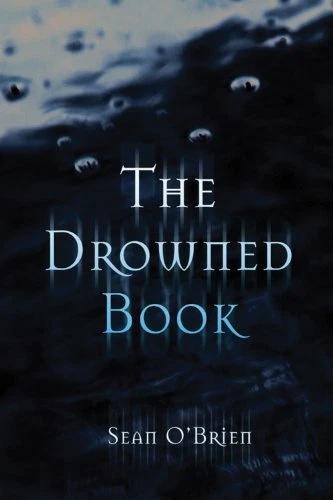Isolation, Rebellion, and Resilience in Alan Sillitoe's 'The Loneliness of the Long-Distance Runner
Allen Sillitoe
Alan
Sillitoe was an English writer born on March 4, 1928, in Nottingham, England.
He rose to prominence as one of the "Angry Young Men," a group of
writers known for their critical perspective on British society in the
post-World War II era. Sillitoe's work often explored themes of working-class
life, reflecting his own background—the son of a tannery worker, he left school
at 14 to work in factories.
Sillitoe's
literary career was marked by his debut novel, "Saturday Night and Sunday
Morning" (1958), and his short story "The Loneliness of the Long-Distance Runner" (1959), both of which were adapted into films. His
writing was characterized by a brash and angry tone, providing a vigorous
account of the struggles and disillusionment of the working class. He passed
away on April 25, 2010, in London, leaving behind a legacy that continues to
influence British literature.
The Loneliness of the Long-Distance Runner - A Summary
"The Loneliness of the Long-Distance Runner" is a poignant
short story by Alan Sillitoe, first published in 1959 as part of a collection
of short stories bearing the same title. The story revolves around the life of
Colin Smith, a 17-year-old working-class teenager living in the gritty city of
Nottingham. Colin's life is marked by poverty, despair, and a sense of
hopelessness. He lives in a dreary home in a downtrodden neighborhood, with
little to aspire to in life.
However,
Colin's life takes a dramatic turn when he commits a petty crime – stealing a
sum of one hundred and fifty pounds from a local baker's shop. His criminal act
lands him in a Borstal, a type of reform school or young offenders'
institution, a place where society sends young delinquents to be reformed.
Inside
the Borstal, Colin's character begins to take shape. He discovers a passion for
long-distance running, which becomes both a physical and emotional escape from
his grim reality. His talent as a runner doesn't go unnoticed, and he is chosen
to represent the Borstal in a prestigious competition for the All-England
Championship, a race that could be his ticket to redemption.
The
Borstal's governor sees potential in Colin and wants him to win the race,
hoping to showcase the institution's ability to reform young offenders. As a
result, Colin is given the privilege to train outside the prison fences, a
gesture that signifies the governor's expectations for him.
Much
of the story is spent recounting Colin's private thoughts during these long
runs. Running becomes a metaphor for thinking and introspection. As Colin runs,
he begins to see his life and the world around him with clarity. It is during
these solitary moments that he confronts the choices he's made, his anger at
society's injustices, and the weight of his past.
Defiance
against authority is a recurring theme throughout the story. Colin's inner
rebellion is evident as he resists conforming to the expectations of the
Borstal's administration, despite the potential rewards of lighter workloads
and privileges if he wins the race.
The
story provides glimpses into Colin's daily routine, as he wakes up early before
sunrise to run. Running becomes a means of isolating himself from the world,
allowing him to think freely and clearly. Colin's long-distance journeys enable
him to distance himself from society's constraints and reflect on his place in
a world defined by class divisions.
As
the day of the marathon arrives, Colin finds himself in a position to win, with
a proud governor watching his every move. He takes the lead, overtaking the
star runner from Ranleigh, the opponent institution. Victory seems assured, but
then, in a pivotal moment, a rush of jarring memories floods Colin's mind.
These
memories include scenes from his troubled home life, marked by his mother's
neglect and infidelity, his father's lifeless body, stern lectures from
detectives and police, and the hypocrisy of authority figures. These images
compel Colin to change his mind. They reveal the complex motivations behind his
decision to rebel against the system that landed him in the Borstal.
With
victory within reach, Colin deliberately stops running just a few meters short
of the finish line. Despite his lead and the disappointment of those who had
placed bets on him, he refuses to complete the race. His decision to lose
intentionally is an act of defiance, a rejection of the governor's expectations
and a symbol of his resistance against the establishment.
The
Borstal authorities respond to Colin's act with heavy-handed punishment,
assigning him to manual labour. However, Colin harbours no regrets about his
decision. He knew precisely what he was doing when he chose to lose the race.
His actions become a testament to his free spirit, independence, and the
unwavering defiance he carries within him.
Throughout
the story, long-distance running serves as both a literal and metaphorical
means of escape for Colin. It enables him to isolate himself from society's
constraints, to reflect upon his social status, and to flee from the harsh
reality of poverty and class divisions. Running allows Colin to confront his
own identity and the injustices he perceives in the world around him.
The
story, "The Loneliness of the Long-Distance Runner" is a compelling
exploration of rebellion, isolation, and the pursuit of individuality in the
face of an oppressive system. It provides readers with a glimpse into the inner
thoughts and struggles of a young man who uses running as a form of resistance,
ultimately making a powerful statement against the injustices he has faced.
Alan Sillitoe's story challenges societal norms and offers a complex character
study of a defiant young protagonist who refuses to conform to expectations.
Analysis
"The
Loneliness of the Long-Distance Runner" by Alan Sillitoe is a powerful and
introspective story that delves into the psyche of the protagonist as he runs a
cross-country race. This narrative is a classic example of Sillitoe's style,
characterized by its focus on working-class life, social issues, and the
internal struggles of individuals against oppressive systems.
The story's title itself, "The
Loneliness of the Long-Distance Runner," sets the tone for the narrative.
The protagonist's physical act of running serves as a metaphor for his
isolation and detachment from society. His thoughts and memories during the
race highlight the emotional and psychological distance he feels from the world
around him.
The narrative is heavily centred on
the protagonist's traumatic past, particularly the suicide of his father. This
traumatic event has left an indelible mark on him and shaped his worldview. It
highlights the theme of personal struggle and the lasting impact of family
tragedies, which is a recurring motif in Sillitoe's works.
The protagonist's time in Borstal, a
juvenile detention centre, underscores his resistance to authority figures and
societal norms. His defiance and struggle against rules and regulations reflect
the broader theme of rebellion against oppressive systems, a common theme in
Sillitoe's writing.
The protagonist's memory of stealing
food as a child and his current involvement in stealing a cash box draw
parallels between his past and present actions. This demonstrates how earlier
choices can have a lasting influence and perpetuate a cycle of rebellion and
defiance.
Throughout the story, there's a
yearning for autonomy and the ability to control one's life. The protagonist's
decision not to spend the stolen money immediately and his cautious approach reflects
a desire to maintain personal integrity, even within a life of crime.
The cross-country race serves as a
powerful symbol for the protagonist's life journey. It represents his
determination to continue moving forward, despite the obstacles and emotional
baggage he carries. His choice not to
slow down or let someone else win reflects his refusal to conform to society's
expectations.
The story portrays the protagonist's
ability to withstand pressure from authority figures, particularly during the
police interrogation. His refusal to give in to their demands is depicted as a
small but significant victory. This underscores the idea that even in the face
of adversity, individuals can assert their autonomy.
"The Loneliness of the Long-Distance Runner" is a poignant and thought-provoking story that encapsulates many of the themes and stylistic elements associated with Alan Sillitoe's works. It's a tale of personal struggle, defiance against authority, and the enduring impact of past trauma, all framed within the context of a cross-country race that serves as a metaphor for the protagonist's life journey.
 Sean
O'Brien, a distinguished poet hailing from the United Kingdom, has etched his
name in literary history as one of the rare individuals to clinch both the T.S.
Eliot Prize and the Forward Poetry Prize for a singular poetry collection.
Currently holding the position of a creative writing professor at Newcastle
University, O'Brien's literary prowess extends far beyond his award-winning
collection, "The Drowned Book," published in 2007. In addition to his
11 poetry collections, O'Brien has left an indelible mark as a critic,
essayist, short story writer, novelist, and playwright. His multifaceted
contributions to the literary world have earned him not only prestigious awards
but also a coveted membership in the Royal Society of Literature.
Sean
O'Brien, a distinguished poet hailing from the United Kingdom, has etched his
name in literary history as one of the rare individuals to clinch both the T.S.
Eliot Prize and the Forward Poetry Prize for a singular poetry collection.
Currently holding the position of a creative writing professor at Newcastle
University, O'Brien's literary prowess extends far beyond his award-winning
collection, "The Drowned Book," published in 2007. In addition to his
11 poetry collections, O'Brien has left an indelible mark as a critic,
essayist, short story writer, novelist, and playwright. His multifaceted
contributions to the literary world have earned him not only prestigious awards
but also a coveted membership in the Royal Society of Literature. Drowned Book," a masterpiece penned by Sean O'Brien, represents a unique
departure from conventional poetry collections. Published in 2007, this
collection stands out for its exceptional unity, a departure from the typical
thematic divisions found in poetry compilations. The collection is described as
“a sustained elegy for lost friends, landscapes and decaying culture”. O'Brien,
influenced significantly by his contemporaneous translation of Dante's Inferno,
infuses the collection with themes of darkness, water, and the underworld. In
describing "The Drowned Book," O'Brien emphasizes its comprehensive
nature, portraying it not merely as a poetry collection but as a cohesive
literary work. The themes explored in the collection range from rivers, boats,
and lighthouses to water gardens, ferries, and fish, creating a rich tapestry
that showcases O'Brien's profound exploration of the elements and the depths of
human experience.
Drowned Book," a masterpiece penned by Sean O'Brien, represents a unique
departure from conventional poetry collections. Published in 2007, this
collection stands out for its exceptional unity, a departure from the typical
thematic divisions found in poetry compilations. The collection is described as
“a sustained elegy for lost friends, landscapes and decaying culture”. O'Brien,
influenced significantly by his contemporaneous translation of Dante's Inferno,
infuses the collection with themes of darkness, water, and the underworld. In
describing "The Drowned Book," O'Brien emphasizes its comprehensive
nature, portraying it not merely as a poetry collection but as a cohesive
literary work. The themes explored in the collection range from rivers, boats,
and lighthouses to water gardens, ferries, and fish, creating a rich tapestry
that showcases O'Brien's profound exploration of the elements and the depths of
human experience.